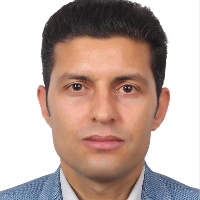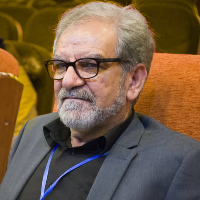Study and prediction of land surface temperature changes of Yazd city: assessing the proximity and changes of land cover
The expansion of urbanization has increased the scale and intensity of thermal islands in cities. Investigating how cities are affected by these thermal islands plays an important role in the future planning of cities. For this purpose, this study examines and predicts the effect of land cover (LC) changes in the three classes of LC including urban areas, barren lands, and vegetation on land surface temperature (LST) in the city of Yazd during the last 30 years using Landsat 5 and 8 images. This study also examines the effect of the ratio of proximity to the barren land and vegetation classes during this period to examine how the recorded LST is affected by the mentioned ratio.
The LC maps of Yazd city were extracted using a supervised Artificial Neural Network classifier for 1990, 2000, 2010, and 2020. Terrestrial data, google earth, and ground truth maps were used to derive training data. The LST of Yazd was obtained from the thermal band of Landsat 5 and Landsat 8. After that, the LST was classified into six available classes, including 16-20, 21-25, 26-30, 31-35, 36-40, and 41-46°C which has shown that the four last classes play an important role in LST changes in Yazd city during last 30 years. To evaluate the effects of the proximity of barren land and vegetation LC classes on the LST recorded by the sensor, firstly the proximity ratio was calculated in 5×5 kernels for all image pixels. Then the mean of LST was derived based on this ratio of barren and vegetation lands.
The results of this study showed that in Yazd city, from 1990 to 2020, the area of the urban area has grown 91.5 % (33.6 km2) over the last 30 years. Barren and vegetation land, have negative growth in the area over the same period. From 1990 to 2020, barren lands in Yazd experienced a growth -79.4% (21.3 km2), which the sharp growth of urban areas justifies this negative growth in barren lands. Vegetation classes in Yazd from 1990 to 2020, have experienced a growth -68.5% (12.2 km2). The average ground temperature of this city has been constantly increasing during these 30 years. By 2020, the city of Yazd, reaching an average of 38.1°C compared to 29.2°C in 1990, has experienced a 30.4% increase in its average LST. The temperature classes of this city have also moved towards warmer temperature classes in these 30 years. As the main part of the LST area of Yazd, in 1990, in the first place, the class of 26-30 °C with 47 km2 and at the second place the class of 31-35 °C with 26.4 km2 are classified. In 2000, in a reverse trend, the main LST class was 31-35°C with 52.8 km2 as the first place and the 26-30°C class with 20 km2 as the second place. With an increased class, the LST class of 36-40 °C for both 2010 and 2020 with 40.2 and 63 km2 respectively has been recorded as the largest LST class. The LST class of 31-35 °C has been recorded as the second LST class of both years with 33.2 and 9.7 km2, respectively. The difference between these two years is in the growth -70.7% (23.5 km2) of the class area of 31-35°C and the increase of 10.3% (0.8 km2) of the hottest class of the statistical period, 41-46°C, in 2020, compared to 2010. The results of this study also showed that the highest average temperature in all year was recorded for barren lands at 37.3°C. Also, a positive correlation (mean correlation 0.95) was shown between the proximity to barren land cover and the mean LST. However, the sharp upward trend of urban areas in the whole statistical period (91.5% with 33.6 km2) as the second class with the highest average LST after the barren lands with an average of 34.1 °C versus a downward trend of 79.4% (21.3 km2) of barren lands has increased the average LST over a statistical period of 30 years. It is because the decrease of 68.5% (12.2 km2) of vegetation areas as an LC class with the lowest average LST (32.2°C) in the same period, neutralized the effect of decreasing barren lands and intensified the trend of increasing the LST. Meanwhile, a negative correlation (mean correlation -0.97) was established between the ratio of proximity to vegetation and the average LST. The results of forecasting land cover changes in 2030 in the city of Yazd indicate that in a process similar to previous periods, the class of urban areas will increase. This growth will not be significant compared to 2020, with 1.6% (1.1 km2). However, a significant decrease in green areas (vegetation) by -19.6% (1.1 km2) in the same period, along with a slight decrease in barren lands -1.8% (0.1 km2) will cause the earth’s surface to become warmer, and the area of LST classes will be increased by the year. Accordingly, the main area of the LST class in 2030 for the city of Yazd, as in 2020, is forecasted 36-40°C with 58.2 km2 (-7.6% growth compared to 2020). But the dramatic growth of the hottest class of LST over the statistical period (41-46°C) with 166.3% (14.3 km2) growth as the second major class of LST in this year (2030), as well as the negative and dramatic growth of the relatively cooler class 31-35°C with -97.9 % (9.5 km2) in this year indicates the warmer ground surface temperature in 2030.
The results of this study indicate that in 30 years in Yazd city, the decrease in vegetation in the first place, along with the increase in urban areas in the second place, has caused an increase in LST. Thus, the vegetation class reduces the LST due to its cooling effect considering its water content. In this study, it was shown that by taking all factors into account, the reduction of barren lands will lead to a decrease in LST, and also increasing urban areas with a lower impact factor than barren lands will increase the LST. However, the decrease in the area of green lands (vegetation) in recent years, along with the sharp increase in the area of urban areas has caused an increase in LST. Increasing the proximity to vegetation by creating green areas by increasing the ratio of vegetation in the vicinity of different LC and also reducing the area of barren lands, can be a good solution to deal with the impact of urbanization in recent years on ground surface temperature.
-
Quantifying the Zayandeh Rud River drying effects on land surface temperature and adjacent vegetation cover changes over the past 33 years using satellite images
, Negar Naghipur, Mehrangiz Rezaei, *
Journal of Climate Change Research, -
Evaluation of Urban Growth and Its Impact on Vegetation and Environmental Sustainability (Case study: Zahedan City)
Zahra Kalmishi, *, Rahman Zandi,
Geography and Sustainability of Environment, -
Investigation of the Thermal Anomaly Precursor in the 2017 Azgeleh Earthquake in Kermanshah, Iran
Mostafa Heidari, Ahmad Mazidi *,
Journal of Geography and Environmental Hazards, -
Investigating the Earthquake Cloud Precursor in the 2017 Azgeleh Earthquake in Kermanshah, Iran
Mostafa Heidari *, Ahmad Mazidi,
Journal of Geography and Environmental Hazards, -
Combination of Semi-Empirical Radar Remote Sensing Models for Soil Moisture Retrieval During the Plant Growing Season Based on Machine Learning
Amir Sedighi, Saeid Hamzeh *, , Abd Ali Naseri, Jamal Mohammadi Moalezade
Iran Water Resources Research, -
The influence of urban stractures, vegetation cover, and utilized data in urban impervious surface mapping from multi-source data
Ali Abdolkhani, Sara Attarchi *,
Geographical Urban Planning Research,





